#André De Rop
Explore tagged Tumblr posts
Text
Vijf jaar geleden: voorstelling historiek van Jongerengroep de Veldstraat
Op vrijdag 22 november 2019 werd het Jaarboek van het Gemeentemuseum van Temse voorgesteld in de feestzaal van het gemeentehuis (Markt). Het Jaarboek bevatte een uitgebreide historiek van Jongerengroep de Veldstraat , geïllustreerd met foto’s. Auteurs: Luc Boel en Ronny Wullaert. Continue reading Vijf jaar geleden: voorstelling historiek van Jongerengroep de Veldstraat
#André De Rop#Erik Van Haegenberg#Frank Van der Herten#Guido Pijl#Ivo De Beer#Johan Smet#Jos Martin#Luc Boel#Luc De Vooght#Marc Boel#Patrick Michiels#Theo Baeke#Werner Stuyven#Willy Baeke#Wim De Moor
0 notes
Text
'La Vita' 1
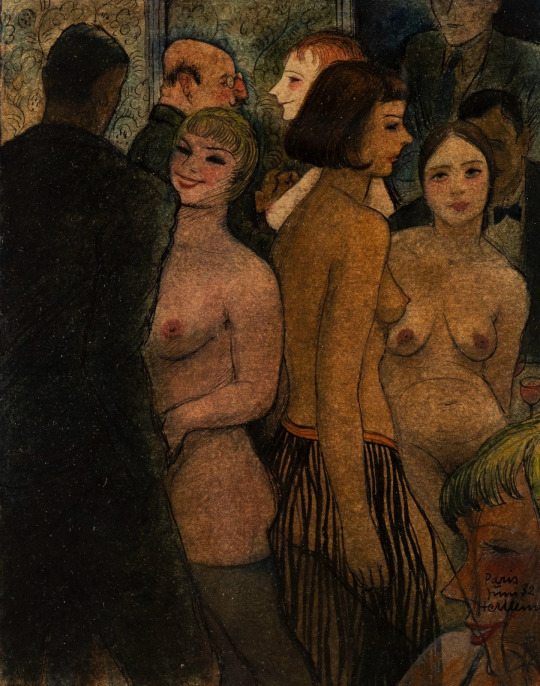
In the brothel, 1932 | Willi Hertlein (1908-1968, Germany)
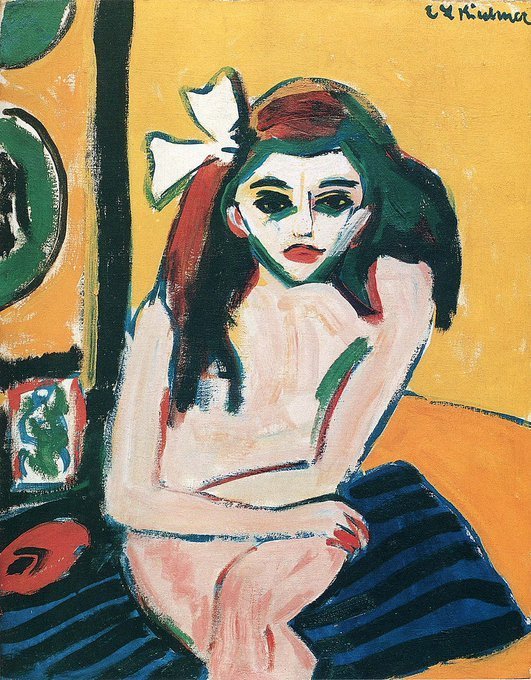
Marzella, 1908 | Ernst Ludwig Kirchner (1880-1938, Germany)
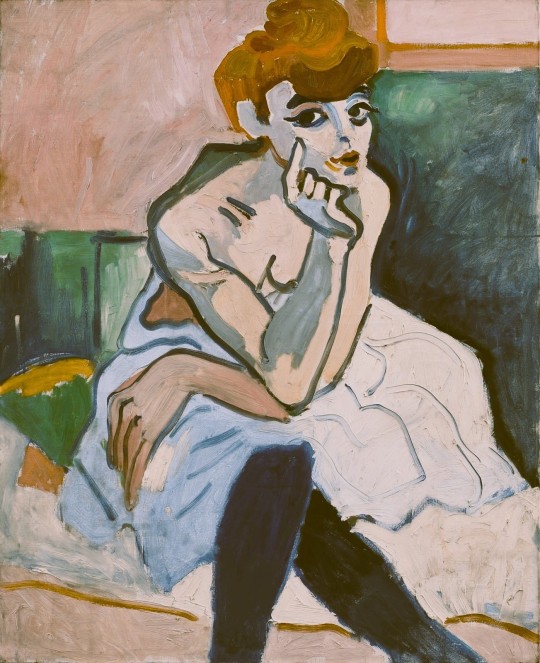
La femme en chemise ou Danseuse, 1906 | André Derain (1880-1954, France)
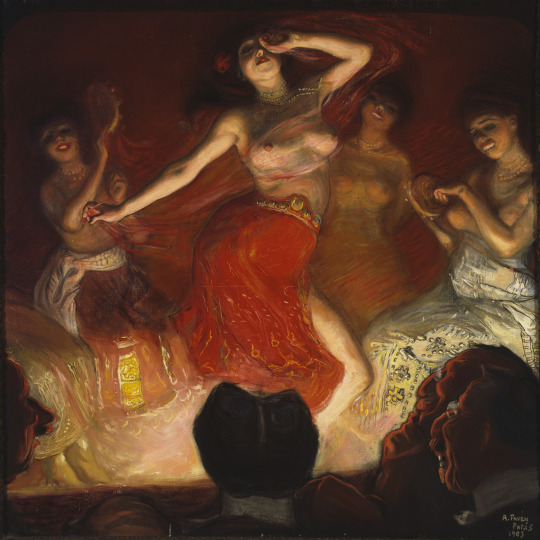
Belly Dancer, 1903 | Antti Favén (1882-1948, Finland)
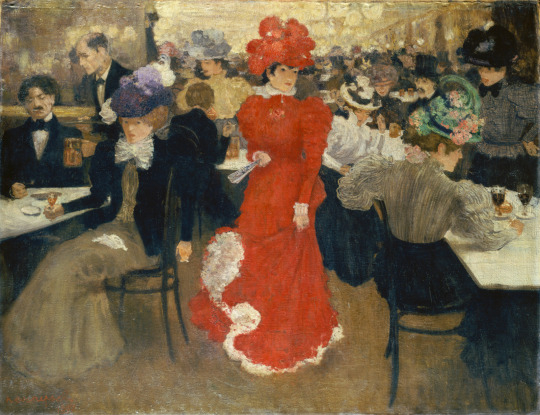
Au café d'Harcourt à Paris, 1897 | Henri Evenepoel (1872-1899, France)
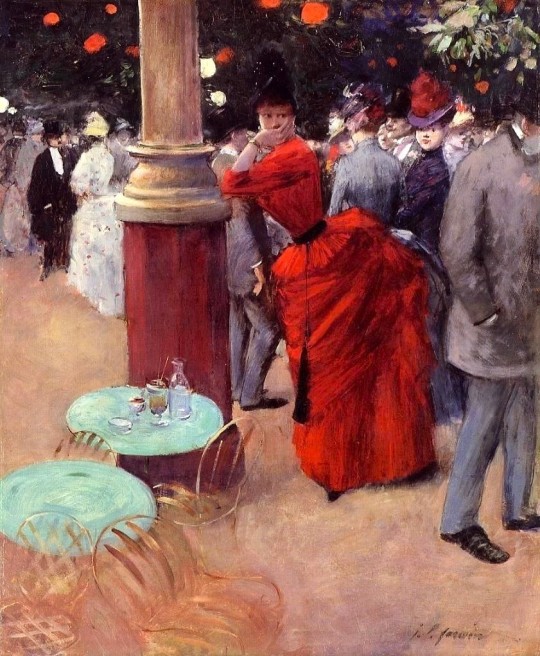
Aux jardins publics | Jean-Louis Forain (1852-1931, France)
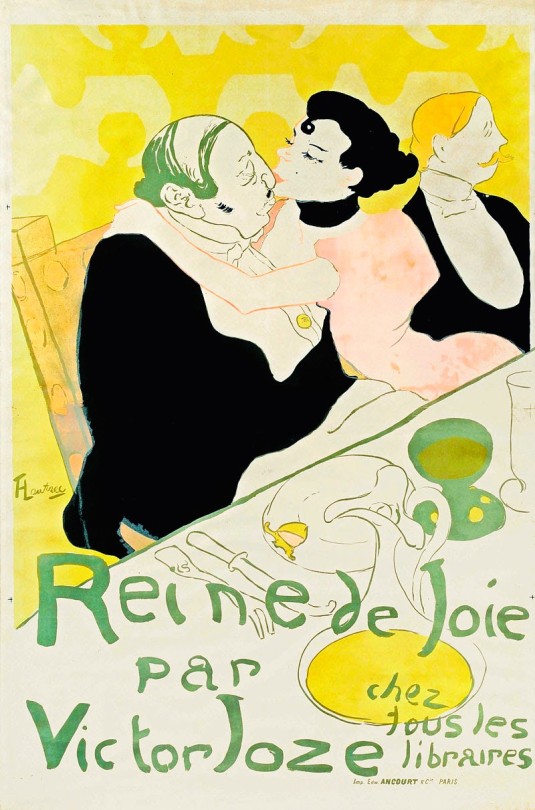
Reine de joie, 1892 | Henri de Toulouse-Lautrec (1864-1901, France)
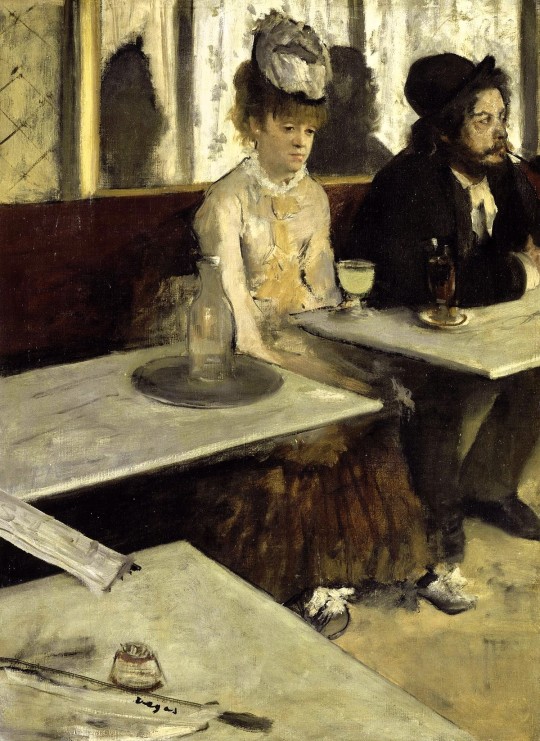
Absinthe, 1876 | Edgar Degas (1834-1917, France)
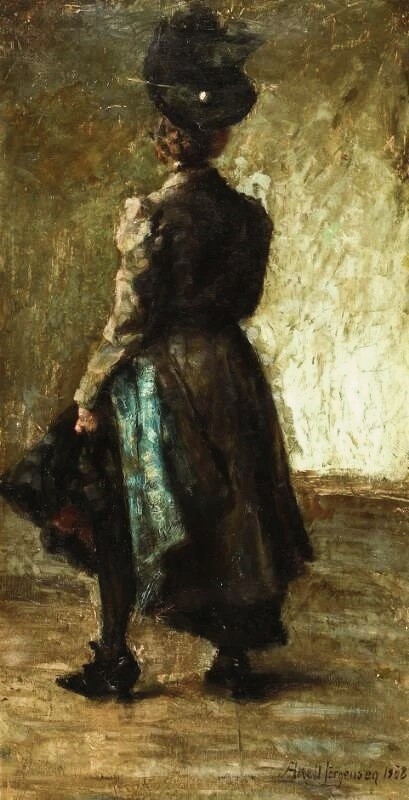
Sivdamen (a prostituted woman), 1908 | Aksel Jørgensen (1883-1957, Denmark)
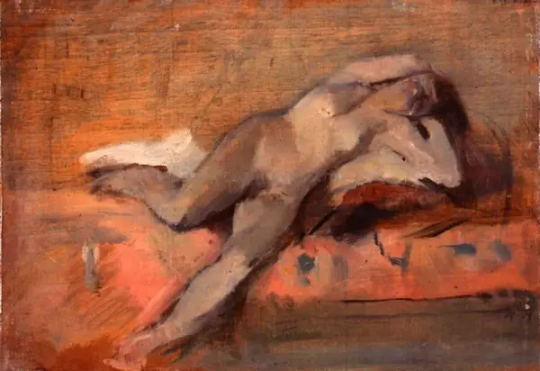
Étude de nu, femme renversée sur un divan, 1882 (Musée Toulouse-Lautrec, Albi) | Henri de Toulouse-Lautrec (1864-1901, France)
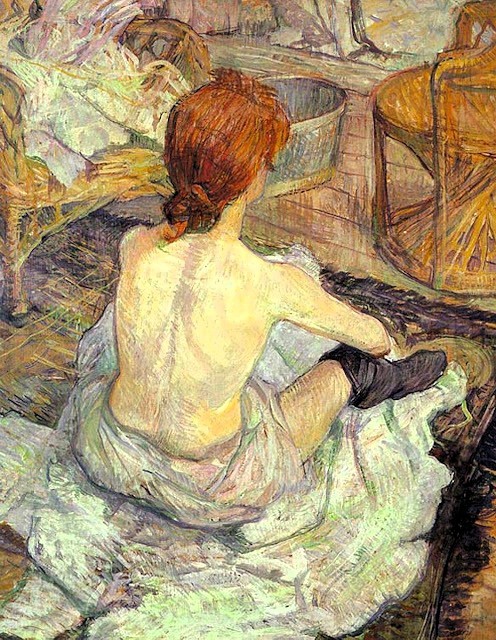
Femme aux toilettes, 1896 | Henri de Toulouse-Lautrec (1864-1901, France)
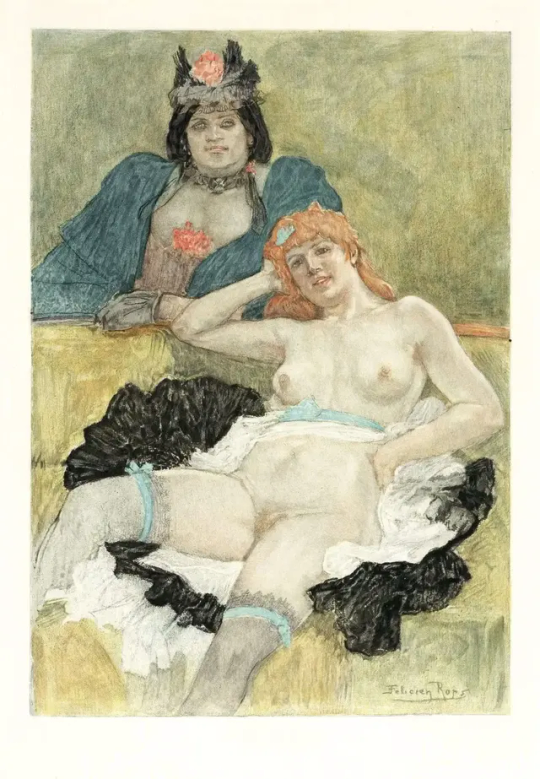
Les deux amies, 1880-90 (Musée Félicien Rops, Namur) | Félicien Rops (1833-1898, Belgium)
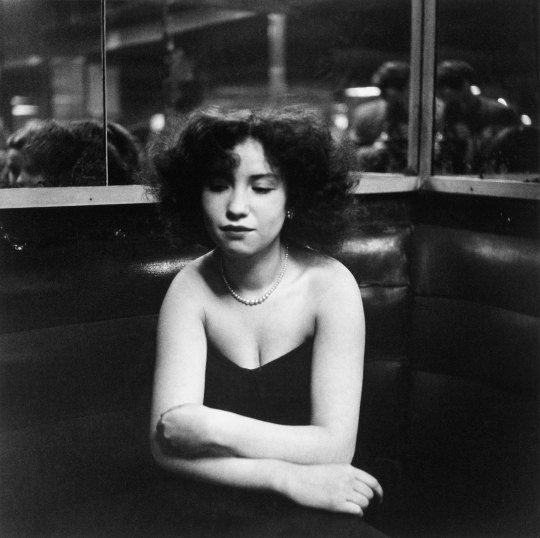
Mademoiselle Anita, 1951 | ph., Robert Doisneau (1912-1994, France)
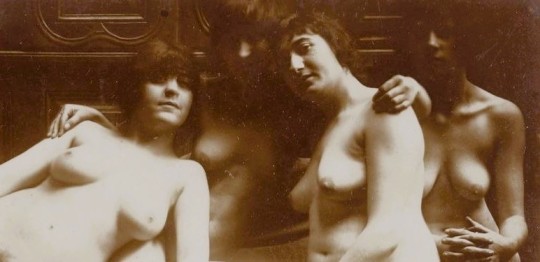
Groupe de quatre femmes nues, 1895-1910 | ph., François-Rupert Carabin (1862-1932, France)
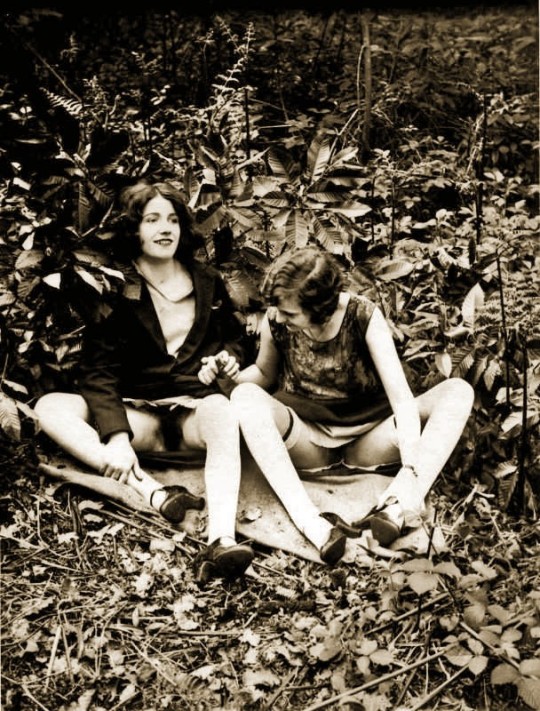
Prostituées de Paris, vers 1930 | ph., Monsieur X (actif, 1920-30)
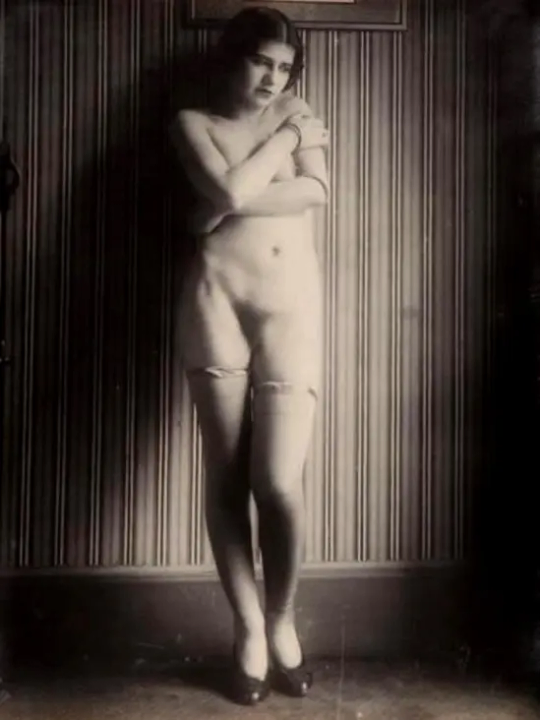
Prostituées de Paris, vers 1930 | ph., Monsieur X (actif, 1920-30)
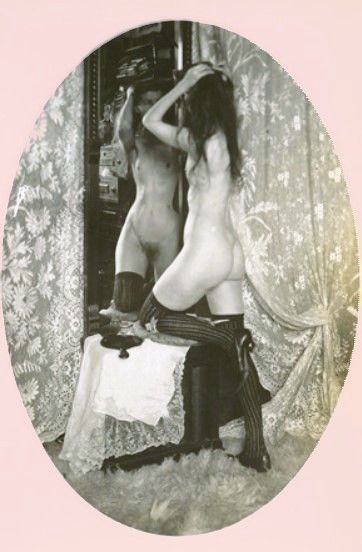
Working Girl, Reading, Pennsylvania, 1892 | ph., William Goldman (1856-1922, USA)
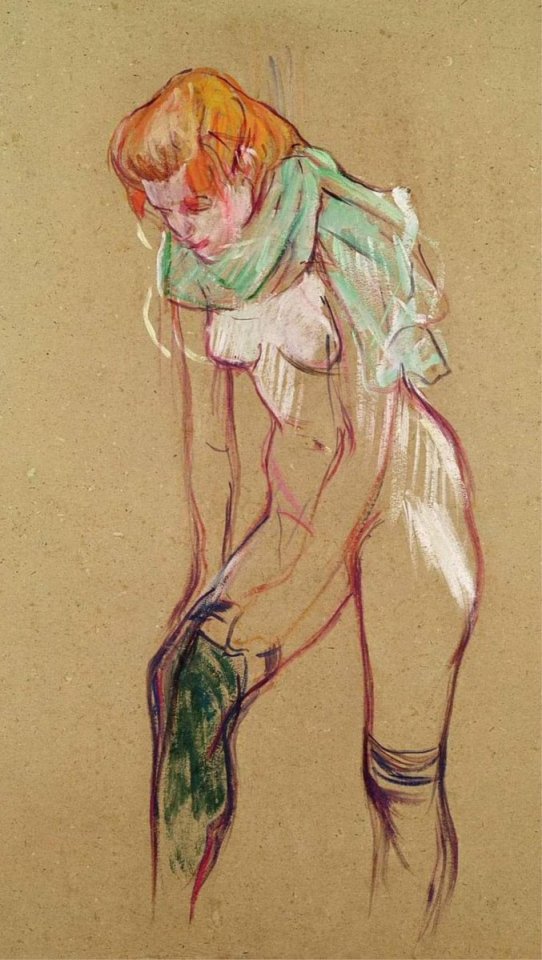
Henri de Toulouse-Lautrec (1864-1901, France)
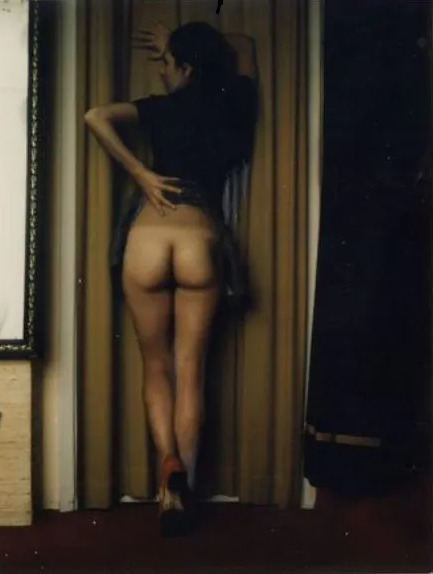
Untitled, polaroid, 1962-73 | ph., Carlo Mollino (1905-1973, Italia)
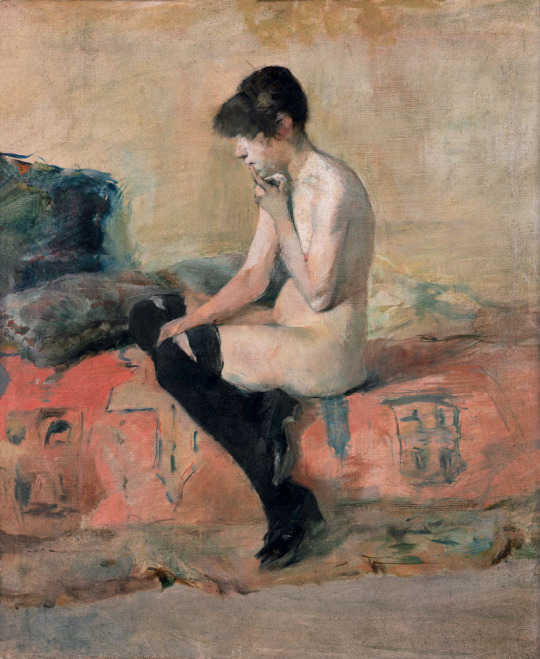
Étude de nu, femme assise sur un divan, 1882 (Musée Toulouse-Lautrec, Albi, France) | Henri de Toulouse-Lautrec (1864-1901, France)
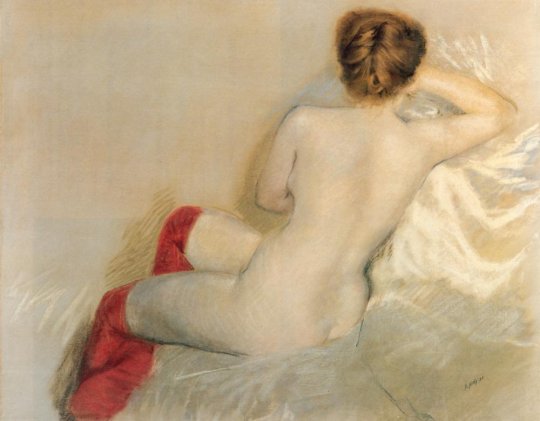
Nudo con calze rosse (Nude with red stockings), 1879 | Giuseppe De Nittis (1846-1884, Italia)
16 notes
·
View notes
Text
watchlist for 2020 2020 reading list last updated 8.1.2020
I know there aren’t a lot of films directed by women or non-Western directors on this list, so if any of you have any recommendations I would love to hear them! I’m going to do some of my own research, but if you guys know any lesser known ones I’d love to add them to my list!
Faust (1926) dir. F. W. Murnau Rebecca (1940) dir. Alfred Hitchcock Rope (1948) dir. Alfred Hitchcock Secret beyond the Door (1948) dir. Fritz Lang Noita palaa elämään / The Witch (1952) dir. by Roland af Hällström North by Northwest (1959) dir. Alfred Hitchcock 1960s Et mourir de plaisir (1960) dir. Roger Vadim Persona (1960) dir. Ingmar Bergman The Pit and the Pendulum (1961) dir. Roger Corman Cleo from 5 to 7 (1962) dir. Agnès Varda I tre volti della paura / Black Sabbath (1963) dir. Mario Bava Lilith (1964) dir. Robert Rossen Vampirisme (1967) dir. Bernard Chaouat; Patrice Duvic The Satanist (1968) dir. Zoltan G. Spencer Le viol du vampire (1968) dir. Jean Rollin
1970s Le frisson des vampires (1970) dir. Jean Rollin The Vampire Doll (1970) dir. Michio Yamamoto La rose écorchée / The Blood Rose (1970) dir. Claude Mulot Ovoce stromu rajských jíme / Full of Paradise (1970) dir. Vera Chytilová +Trzecia część nocy / The Third Part of the Night (1971) dir. Andrzej Żuławski Les Lèvres Rouges / The Red Lips (1971) dir. Harry Kümel Una lucertola con la pelle di donna / A Lizard in a Woman’s Skin (1971) dir. Lucio Fulci Viskningar och Rop / Cries and Whispers (1972) dir. Ingmar Bergman Diabeł (1972) dir. Andrzej Żuławski La notte dei diavoli / Night of the Devils (1972) dir. Giorgio Ferroni Ángeles y querubines / Angels and Cherubs (1972) dir. Rafael Corkidi The Blood Spattered Bride (1972) dir. Vicente Aranda La morte negli occhi del gatto / Seven Deaths in a Cat’s Eye (1973) dir. Antonio Margheriti Cannibal Girls (1973) dir. Ivan Reitman +Ganja & Hess (1973) dir. Bill Gun La Rose de Fer / The Iron Rose (1973) dir. Jean Rollin Lady Snowblood (1973) dir. Toshiya Fujita +Messiah of Evil (1973) dir. Gloria Katz & Willard Huyck Female Vampire (1973) dir. Jesús Franco Thriller – en grym film / Thriller: A Cruel Picture (1973) dir. Bo Arne Vibenius Bloody Murder / …la main à couper (1974) dir. Etienne Périer +La Bête / The Beast (1975) dir. Walerian Borowczyk Dzieje grzechu / The Story of Sin (1975) dir. Walerian Borowczyk La Marge / The Stalker (1975) dir. Walerian Borowczyk +Sebastiane (1975) dir. Derek Jarman Profondo rosso / Deep Red (1975) dir. Dario Argento +Salomé (1976) dir. Téo Harnadez +Die Marquise von O… / The Maquis of O… (1976) dir. Éric Rohmer The Witch Who Came from the Sea (1976) dir. Matt Cimber The Uncanny (1977) dir. Denis Héroux Death Bed: The Bed That Eats (1977) dir. George Barry Portret (1977) dir. Stanisław Lenartowicz. Escalofrío / Satan’s Blood (1978) dir. Carlos Puerto +Nosferatu: Phantom der Nacht (1979) dir. Werner Herzog Les Sœurs Brontë / The Brontë Sisters (1979) dir. André Téchiné A Mulher Que Inventou o Amor / The Woman Who Invented Love (1979) dir. Jean Garrett +Fascination (1979) dir. Jean Rollin Les héroïnes du mal / Immoral Women (1979) dir. Walerian Borowczyk
1980s Aus dem Leben der Marionetten / From the Life of the Marionettes (1980) dir. Ingmar Bergman La Dame aux camélias / The Lady of the Camellias (1980) dir. Mauro Bolognini Inferno (1980) dir. Dario Argento La nuit des traquées / The Night of the Hunted (1980) dir. Jean Rollin +Dressed to Kill (1980) dir. Brian de Palma Docteur Jekyll et les femmes (1981) dir. Walerian Borowczyk +Possession (1981) dir. Andrzej Żuławski Blow Out (1981) dir. Brian de Palma La morte vivante / The Living Dead Girl (1982) dir. Jean Rollin Tenebre (1982) dir. Dario Argento Lovely Devil (1982) dir. Nobuhiko Obayashi Angst (1983) dir. Gerald Kargl The Gold of Love (1983) dir. Eckhart Schmidt The Legend of Suram Fortress (1984) Sergei Parajanov Body Double (1984) dir. Brian de Palma +Caravaggio (1986) dir. Derek Jarman +Der Rosenkönig (1986) dir. Werner Schroeter Sous le soleil de Satan / Under the Sun of Satan (1987) dir. Maurice Pialat Vlčí bouda / Wolf’s Hole (1987) dir. Věra Chytilová +Babette’s Feast (1987) dir.Gabriel Axel Nekromantik (1987) dir. Jörg Buttgereit
1990s Mirror Mirror (1990) dir. Marina Sargenti +Malina (1991) dir. Werner Schroeter Raising Cain (1992) dir. Brian de Palma The Piano (1993) dir. Jane Campion Little Death (1995) dir. Francois Ozon A Casa (1997) dir. Šarūnas Bartas
2000s The Cell (2000) dir. Tarsem Singh Trouble Every Day (2001) dir. Claire Denis Stages of Mourning (2004) dir. Sarah Pucill Perfume: The Story Of A Murderer (2006) dir. Tom Tykwer À l'intérieur (2007) dir. Alexandre Bustillo and Julien Maury Barbe Bleue / Bluebeard (2009) dir. Catherine Breillat Viola di Mare (2009) dir. Donatella Maiorca Le masque de la Méduse (2009) dir. Jean Rollin
2010s Phyllis (2010) dir. Zina Saro-Wiwa Crime d’amour / Love Crime (2010) dir. Alain Corneau Passion (2012) dir. Brian de Palma Goodnight Mommy (2014) dir. Veronika Franz & Severin Fiala Cosmos (2015) dir. Andrzej Żuławski The Lure (2015) dir. Agnieszka Smoczynska Evolution (2015) dir. Lucile Hadzihalilovic +Raw (2016) dir. Julia Ducournau +As Boas Maneiras / Good Manners (2017) dir. Marco Dutra & Juliana Rojas +Portrait de la jeune fille en feu (2019) dir. Céline Sciamma +Parasite (2019) dir. Bong Joon Ho Darlin’ (2019) dir. Pollyanna Mcintosh Brian De Palma’s Filmography Jean Rollin’s filmography Alfred Hitchcock’s filmography Dario Argento’s filmography
finished A Girl Walks Home Alone at Night (2014) dir. Ana Lily Amirpour Red Dragon (2002) dir. Brett Ratner Faust (2011) dir. Alexander Sokurov
51 notes
·
View notes
Video
youtube
Thomas Rome ArtStation and HULK story ! ... Avec PAP ...
Direction la Wallonie, en Belgique ! Nous sommes chez Thomas Rome, (dessinateur / illustrateur), dans son "labo" de création, au cœur de Namur, au pied d'une forteresse médiévale. Pour les curieux de passage ici, dans le centre-ville, le musée Félicien Rops expose les œuvres érotiques, datant du XIXe siècle, de l'artiste éponyme originaire de Namur.
Je suis aussi en compagnie de l'un de mes collaborateur et ami, Pierre-André Pautrat alias "PAP" spécialiste des comics, pour une brève sur Hulk, le géant vert dans cette vidéo ! ... Nous allons donc parler ensemble BD, venez découvrir le 9ème Art avec mes amis, des passionnés.
Contact de Thomas: https://www.facebook.com/ThomasRomeArt Et aussi, ici le book: https://www.artstation.com/thomas_r
Pour revoir la vidéo, le ITV avec Ava Drobynine, la créatrice des personnages de la BD "Safari Rouge" https://www.youtube.com/watch?v=8mJMU...
Ne pas oublier d'aller voir la seconde vidéo en complément ! Avec: Didier Schmitt: le scénariste et concepteur de cette fantastique BD: https://www.youtube.com/watch?v=ONZaW...
Story de la BD: (1er Tome) "2080, l’équipage du vaisseau Octopus est en route depuis la Terre pour la planète Mars. La mission est simple : découvrir la cause d’un incident majeur qui a eu lieu sur l’une des bases martiennes. Mais durant leur enquête, les passagers du vaisseau découvrent qu’une organisation transhumaniste a l’intention d’exploiter Mars à des fins fallacieuses. Détournés de leur objectif initial à plusieurs reprises, les membres du groupe au demeurant hétéroclite n’auront d’autre choix que de s’entraider et de lutter, depuis l’espace, contre ceux qui les y ont envoyés et qui ont entre leurs mains le pouvoir de les ramener sur Terre… ou de les laisser là." Plus d'info / chez l'éditeur: https://www.weyrich-edition.be/safari...
Pour le Tome 2 de "Safari Rouge" ... prévu pour fin septembre 2020 ...
INFO / DATES: Ava Drobynine et Thomas Rome en dédicaces lors de la 7ème édition de la bourse des collectionneurs d'Action Toys Belgique, les 11, 12 et 13 septembre prochains, venez nombreux.
Contact : https://www.facebook.com/events/31463...
ABONNE TOI A NOTRE CHAÎNE YOUTUBE ! ... like et merci pour le partage de la vidéo ...
RDV sur Facebook les amis. Abonnnnnnnnnnnnnnnnnnnne toi ! Kidult Conso notre site internet: https://kidult-conso.webnode.be/
FACEBOOK Kidult CONSO la page Facebook : https://www.facebook.com/kidultconso/ Kidult Conso le groupe Facebook: https://www.facebook.com/groups/kidul...
INSTAGRAM Sur Instagram : kidultconso https://www.instagram.com/?hl=fr
TWITTER Sur Twitter : Kidult Conso https://twitter.com/richardblin?lang=fr
Copyright Richard BLIN - 2020 (Saison 2) (Production & réalisation) Contact : [email protected]
Nos sponsors: Foxchip : https://www.foxchip.com/ Mini Europe: https://www.minieurope.com/ Mademoiselle Alma: https://www.mademoisellealma.com/ MOOF: https://www.moofmuseum.be/
1 note
·
View note
Text
my favourite movies from november, 2018
1. Tie Me Up! Tie Me Down! (1989) dir. Pedro Almodóvar
2. A Brighter Summer Day (2001) dir. Edward Yang
3. Full Moon in Paris (1984) dir. Eric Rohmer
4. Picnic at Hanging Rock (1975) dir. Peter Weir
5. Peau d’ane (1970) dir. Jacques Demy
6. Viskningar och Rop (1972) dir. Ingmar Bergman
7. La Double Vie de Veronique (1991) dir. Krysztof Kieslowski
8. Singin’ In The Rain (1952) dir. Stanley Donen & Gene Kelly
9. Rendez-vous (1985) dir. André Téchiné
10. Meek’s Cutoff (2010) dir. Kelly Reichardt
#films#movies#filmstruck#criterion collection#1980s cinema#2000s cinema#2010s cinema#1970s cinema#1950s cinema#1990s cinema#french cinema#swedish cinema#ingmar bergman#jacques demy
16 notes
·
View notes
Link
tracklist:
Alexei Lubimov: Clavierstück für die rechte oder linke Hand allein A-Dur, Wq. 117/1: I. Rechte Hand (Comp. Carl Philipp Emanuel Bach) - Carl Philipp Emanuel Bach: Tangere - ECM 2112 - [0:01:32]
Anna Danilevskaia, Sollazzo Ensemble: Va, Fortune (Comp. Anoniem) - Parle qui veut: Moralizing Songs of the Middle Ages - Linn CKD 529 - [0:02:51]
Lore Binon; Inge Spinette: Apparition: The Night in Silence Under Many a Star (Comp. George Crumb; Walt Whitman) - Les Poetes Maudits - Fuga Libera 746 - [0:03:25]
Revue Blanche: Siete Canciones Populares Españolas (bewerking voor sopraan, dwarsfluit, altviool en harp II Seguidilla murciana (Comp. Anoniem; Manuel De Falla; Revue Blanche ) - Shelter - Warner Classics 5054196726355 - [0:01:16]
Revue Blanche: Siete Canciones Populares Españolas (bewerking voor sopraan, dwarsfluit, altviool en harp) III Asturiana (Comp. Anoniem; Manuel De Falla; Revue Blanche ) - Shelter - Warner Classics 5054196726355 - [0:02:20]
Junges Vokalenensemble Hannover o.l.v. Klaus-Jürgen Etzold: Nox Aurumque (Comp. Eric Whitacre; Charles Anthony Silvestri) - Eric Whitacre. Koormuziek (hope, faith, life, love) - Rondeau Production ROP-60 - [0:05:43]
Daniel Hope; Konzerthaus Kammerorchester Berlin o.l.v. André de Ridder: Spring 2 (Comp. Antonio Vivaldi; Max Richter) - ReComposed by Max Richter: Vivaldi, The Four Seasons - DGG 476 5040 - [0:03:19]
Jocelyn Pook: La Blanche Traversée (Comp. Jocelyn Pook) - Flood - Virgin CDVE 944 - [0:03:58]
Jocelyn Pook: Blow the Wind/Pie Jesu (Comp. Jocelyn Pook) - Flood - Virgin CDVE 944 - [0:03:00]
Emmalyn Fox; Portland State University Chamber Choir, Ethan Sperry: Rivers of Light (Comp. Eriks Esenvalds) - Eriks Esenvalds: The Doors of Heaven - Naxos 8579008 - [0:06:26]
Andrew Bird: The Cormorants (Comp. Andrew Bird) - Echolocations: River - Wegawam 4 - [0:02:28]
Andrew Bird: Ellipses (Comp. Andrew Bird) - Echolocations: River - Wegawam 4 - [0:06:33]
Melanie De Biasio: Brother (Comp. Melanie De Biasio) - Lilies - PIASL070LP/ 962.A159.042 - [0:03:11]
Melanie De Biasio: All My Worlds (Comp. Melanie De Biasio) - Lilies - PIASL070LP/ 962.A159.042 - [0:06:41]
Nick Cave & Warren Ellis: Snow Wolf (Comp. Nick Cave; Warren Ellis) - Wind River - Lakeshore Records 34995 - [0:02:08]
Cro Magnon: Harmonist (Comp. Geert Waegeman) - Floww - Jean et Mar vzw - [0:05:55]
Yadayn: Ruimte (Comp. Gowaart Van Den Bossche) - Adem - Navalorama Records - [0:05:34]
Mark Padmore, Sacconi Quartet: In Damascus: II. And What If You Weep Alone; : IV. Here and Now in Damascus; VII. Soon, We Will Be Free; XI. My Country (Comp. Jonathan Dove; Ali Safar; Anne-Marie McManus) - Jonathan Dove: In Damascus - Signum SIGCD487 - [0:13:23]
Gareth Sager: Eulogy to Lost Elegance (Comp. Gareth Sager) - 88 Tuned Dreams - Freaks R Us FREAK 26CD - [0:03:47]
Wim Mertens; Bert Van Laethem; Tatiana Samouil; Liesbeth De Lombaert; Lode Vercampt; Ruben Appermont: 4 Mains (Comp. Wim Mertens) - Nature's Largess - Wim Mertens Music WMM 1717 - [0:05:15]
Dieter Ilg: Präludium VII (Comp. Johann Sebastian Bach) - B-A-C-H - ACT 9844-2 - [0:04:30]
Airelle Besson, Edouard Ferlet, Stephane Kerecki: Es ist vollbracht (Comp. Edouard Ferlet) - Aires - Alpha 298 - [0:05:17]
Bugge Wesseltoft: Koral (Comp. Johann Sebastian Bach; Bugge Wesseltoft) - Everybody Loves Angels - ACT 9847-2 - [0:06:22]
Bugge Wesseltoft: Angie (Comp. Mick Jagger; Keith Richards) - Everybody Loves Angels - ACT 9847-2 - [0:03:34]
Simon Goff: Orange (Comp. Simon Goff) - HUE - Hiddenseer Music HDSR001 - [0:10:50]
0 notes
Text
The Drawings of André Masson
via Hyperallergic
PARIS — In the polyvalent and multilayered drawings of André Masson, you can sense a free hand in love with its own movement, but not with itself. There is a speeding, automatic, ritualistic, and revelatory mode of iconographic mark-making in all the drawings in André Masson dans l’antre de la métamorphose at Galerie Natalie Seroussi, which seem to flow from one key piece: the sex-machinic “Automatic Drawing” (1924). This jittery work sets up a conflict between hard angles and the feminine litheness of curves. Aggressive lines cut through the supple curves of a centered, nude woman made of Francis Picabia-like cyborg parts. The drawing evidences an artistic method that plays on the line between chaotic control and non-control, aiming toward a capricious alliance that likens mechanical grinding to organic sexuality, an association that opens up both notions to mental connections that enlarge them. In this work, the subsequent cyborg woman of Fritz Lang’s Metropolis (1927) is already undone by disturbances she cannot contain.
An expanded field of subjects pervades the visual lexicon of Surrealism, but Masson is generally considered to have pioneered the automatic drawing technique with an opulence that borders on the decadent. Masson’s graphic automatism was a visual analogy to the écriture automatique, a writing method based on speed, chance, and intuition. In doing so, he also revealed a certain amount of reflection and artistic strategy............Continued
However, around the exact same time (summer of 1924), the English artist and chaos magician Austin Osman Spare — a late-decadent, perversely ornamental graphic dandy in the manner of Felicien Rops and Aubrey Beardsley — produced a sketchbook of “automatic drawings” featuring disembodied fabula on a par with Masson’s. Entitled The Book of Ugly Ecstasy, it contained a series of outlandish, pan-sexual creatures produced through automatic and trance-induced means. This swank book was purchased by the art historian Gerald Reitlinger, but in the spring of 1925 Spare produced another, similar volume, A Book of Automatic Drawings, which has been reproduced. Spare claimedto have been making automatic drawing as early as 1900 (when he was 14), yet he was unknown to the Surrealists. Nevertheless, the dates of his automatic drawing books parrallel Masson’s semi-automatic drawings “Benjamin Péret — Automatic Drawing” (circa 1925) and “A Louis Aragon” (1924) in uncanny ways. Masson’s beautiful, drowsily drawn “Benjamin Péret — Automatic Drawing” fluidly depicts the French poet. Like Spare, Masson began automatic drawings with no preconceived composition in mind. Like a medium channeling a phantom spirit, he let his pen travel hastily across the paper without conscious control, soon finding hints of images emerging from the abstract, lace-like web.
Like Masson, Spare claimed that twisting and interlacing lines permit the magical germ of an idea in the unconscious mind to express — or at least suggest — itself to consciousness. For Masson, artistic intentions should just escape consciousness. Although some shapes are discernible amid abstract lines, others seem to be open to interpretation, allowing viewers to use their own subconscious cues to decipher the images. In time, shapes might be found to emerge, suggesting forms.
0 notes
Text
Hyperallergic: The Mexican Modernists Who Found Success in Decadence
Antonio “El Corcito” Ruiz, “Le Rêve de la Malinche” (1939, oil on masonite, Mexico, Galería de Arte Mexicano (courtesy Galería de Arte Mexicano, © photo INBA/Museo Nacional de Arte)
PARIS — In Mexique 1900–1950, the Mexican avant-garde art of the first half of the 20th century offers a disorientating paradox. Many of the 200 works in the show were derived from the Parisian avant-garde and are as exciting as a reggae version of “Hey Jude.” But sometimes the Mexican art manages to present a dark, gnarly, and fierce mysticism that challenges and extends French secular tastes in aesthetic experimentation.
Mexican artists and other artists under the influence of Mexican history often took up the grand theme of life by celebrating and mocking death. For the French poet and leader of the Surrealist movement André Breton, this mind-boggling, death-defying attitude was almost the purest incarnation of Surrealist theory. The Surrealist-affiliated Antonin Artaud famously lived there with the Rarámuri people in the mid 1930s, when he experimented with peyote (his notes about these experiences were later released in a volume titled The Peyote Dance). Inspired by his and Breton’s Mexican painter friend Federico Cantú Garza (excluded from this show), Artaud sought to find in Mexico a spirit of magical, nondualist vision and psyche.
Installation view of Mexique 1900–1950 at the Grand Palais; exhibition design by Atelier Jodar Architecture (photo © Didier Plowy for Rmn-Grand Palais)
I agree with both Breton and Artaud that being in Mexico can astonish in certain fierce places. At Teotihuacan, the pre-Hispanic Aztec site near Mexico City, I once walked along the Avenue of the Dead and climbed to the top of the Pyramid of the Sun, the largest pyramid in Teotihuacan and one of the largest in Mesoamerica, just as a huge thunderstorm rolled in. That scary and sublime experience opened up a freaked-out electrical understanding of Aztec life and artifacts to me in a way that no museum or book had. I experienced an immense sliding of Mexico into electrified, wet darkness as crescendo upon crescendo rang out around me. One moment form appeared solid and firm, and the next fleetingly cloud-like and darkly fugitive.
David Alfaro Siqueiros, “Autoportrait (Le Grand Colonel)” (1945), México, INBA, Museo Nacional de Arte Patrimoine culturel, 1982 (© INBA/Museo Nacional de Arte)
Transmitting something of the searing intensity of this conquest of the psyche, excerpts of ¡Que viva México! (1932) are projected large in this exhibition’s second gallery. It is a black-and-white film about Mexico by Sergei Eisenstein, the Soviet film director theorist who pioneered montage, and Grigori Aleksandrov. Like many Leftists, Eisenstein was enthralled by the Mexican socialist revolution in 1910 and in 1927 he had the opportunity to meet the Mexican muralist Diego Rivera, who was visiting Moscow for the celebrations of the Russian revolution’s 10th anniversary. Rivera had seen Eisenstein’s film The Battleship Potemkin (1925), and praised it by comparing it to his own work as a painter in service of the Mexican revolution.
Tina Modotti, “Guitar, Bandolier, and Sickle” (1929), Mexico, INBA, Museo Nacional de Arte, gift of the Maples Arce family, 2015 (© Francisco Kochen)
Unsurprisingly, the paintings and sculptures in this Grand Palais exhibition do not quite reward either fierce mystical musings or revolutionary expectations. However, there are many works to enjoy by Frida Kahlo and los tres grandes Mexican muralists — Rivera, David Alfaro Siqueiros, and José Clemente Orozco. Standouts include Rivera’s Neoclassical, Picasso-inspired “La Molendera” (“Woman Grinding Maize,” 1924); Kahlo’s “Tanto Frida” (“Both Fridas,” 1939) and “Autorretrato con el pelo corto” (“Self-Portrait with Cropped Hair,” 1940) — painted shortly after divorcing Rivera; Siqueiros’s pretentious self-portrait “Autorretrato (Le Grand Colonel)” (1945); and Orozco’s quite beautiful image “Les Femmes des soldats” (“Wives of Soldiers,” 1926). Tina Modotti’s photograph “Guitarra, bandolera y la hoz” (“Guitar, Bandolier and Sickle,” 1929) and Lola Álvarez Bravo’s “Retrato de Lola” (“Portrait of Lola,” circa 1930) are excellent, Constructivist style works.
Wolfgang Paalen, “Le Génie de l’espèce (os formant un pistolet)” (1938), bone, Colección Fundación Wolfgang e Isabel Paalen Comodato en Franz Mayer (© Museo Franz Mayer, Mexico)
But it is the German-Austrian-Mexican artist and art philosopher Wolfgang Paalen who picks up the mortality mockery mood I so enjoy with his assemblage “El genio de la especie (formación de hueso una pistola)” (“The Genius of the Species [Bone Formation Gun],” 1938). Paalen was Jewish and a member of the Abstraction-Création group and Surrealist movement in the mid-1930s while living in Mexico after fleeing the Nazis. Other Surrealist types in the show include Kahlo, Antonio M. Ruíz (nicknamed “El Corcito” for his resemblance to the then-popular matador Torero El Corcito), the Guatemalan artist Carlos Mérida, José Horna, Leonora Carrington (also a founding member of the Women’s Liberation Movement in Mexico during the 1970s), and Alice Rahon, but Paalen was unique in founding his own counter-Surrealist art magazine, DYN, in which he tried to reconcile diverging materialist and occult tendencies in Surrealism with his philosophy of contingency. His boney gun and the excerpts from ¡Que viva México! transmit better than the paintings featured here the mood of simultaneously honoring and mocking death typical of the Day of the Dead celebrations that I have experienced in Mexico.
I found the paintings in Mexique 1900–1950 a bit disappointing at first, until I placed some of them within the larger context of the mysticism of the Mexican Baroque tradition, which spanned from the middle of the 17th century through the late exuberant period of the 18th century. Unlike the early-20th century Mexican avant-garde’s adaptation of the Parisian avant-garde, the Mexican Baroque was neither an acceptance nor a negation of European aesthetics, but rather a fine and decadent abuse of them. This highly colorful Mexican brand of Baroque took gilded European conventions and whipped them rapturously into a glazed, colorful frenzy. The Mexican Baroque can teem with the all-over symmetrical complexities of shiny throbbing flowers, twisting leaves, spinning clouds, and dazzling embedded figures that I detected in the excessive flourishes of Kahlo’s “Le Cadre” (“The Frame,” 1938) and Ramón Cano Manilla’s “Indienne d’Oaxaca” (“Oaxaca Indian,” 1928), with its Henri Rousseau style of over-doing the naïve norm.
Installation view of Mexique 1900–1950 at the Grand Palais; exhibition design by Atelier Jodar Architecture (photo © Didier Plowy for Rmn-Grand Palais)
During one of my visits to Mexico, I found a good example of the mystic, saturating tendency in the late-Baroque Catholic church in the tiny Mexican village of Santa Maria Tonantzintla. Here, an excessive talavera decorative web danced around me in unrestrained profusion and forms seemed to explode with pleasure as everywhere foliage glistened, leaves shined, angels hovered, and carved fruit exuded thick drops of dark honey. Such syncretist excess is typical of the late-Hispanic Baroque, which is also called the Churrigueresque, after the Spanish architect José de Churriguera. This period has been called an exaggeration or overdetermination of the Baroque to such an extent that it marked the end of that era.
Ángel Zárraga, “La Femme et le Pantin” (1909), oil on canvas, Collection Andrés Blaisten (© DeAgostini/Leemage; © Adagp, Paris 2016)
The decadent Mexican exaggeration of European Baroque style explains a lot in this exhibition to me, particularly as it opens with Rivera’s “Retrato de Adolfo Best Maugard” (“Portrait of Adolfo Best Maugard,” 1913) and Ángel Zárraga’s decadent “La Femme et le Pantin” (“Woman and Puppet,” 1909). Zárraga’s is clearly a work heavily influenced by Decadent French theory, which is almost equivalent to the fin de siècle Symbolist theory. The foremost Decadent visual artist, in my estimation, was the extraordinary Félicien Rops, whose masterpiece “Pornokratès, La dame au cochon” (“Pornokratès, Lady and Pig,” 1878) seems to have registered particularly powerfully with Zárraga. As in “Pornokratès,” there is a discernible taste for the Symbolist theory of French poets Jean Moréas and Stéphane Mallarmé in Zárraga’s puppet painting.
I agree with Lucy Lippard’s assessment in The Lure of the Local that “space combined with memory defines place.” By looking backward into my memories of Mexican architecture while exploring Mexique 1900–1950, the show took on for me some of the added benefits to the imagination that mystical decadence offers. Mixing that with formal experimentation based in excess and political revolution make for a heady brew — just the libation called for in our time of right-wing, demagogic populism.
Installation view of Mexique 1900–1950 at the Grand Palais; exhibition design by Atelier Jodar Architecture (photo © Didier Plowy for Rmn-Grand Palais)
Mexique 1900–1950 continues at the Grand Palais ( 3 Avenue du Général Eisenhower, eighth arrondissement, Paris) through January 23, 2017.
The post The Mexican Modernists Who Found Success in Decadence appeared first on Hyperallergic.
from Hyperallergic http://ift.tt/2hLtwX9 via IFTTT
1 note
·
View note
Text
Dipendenze (addiction)

La morfinomane (the morphine addict), 1899 | Vittorio Corcos (1859-1933, Italia)

The absinthe drinker, 1901 (Praga, Café Slavia) | Viktor Oliva (1861-1928, Czechia)
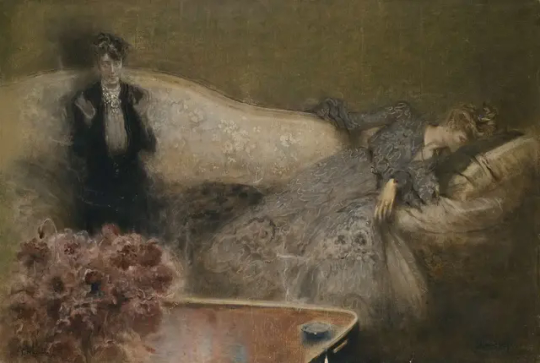
Morfinomani (morphine addicts), 1905 | Serafino Macchiati (1861-1916, Italia)

La buveuse d’absinthe, 1907 | Léon Spillaert (1881-1946, Belgium)

Buveurs d'absinthe, 1875-76 (Musee d'Orsay, Paris) | Edgar Degas (1834-1917, France)
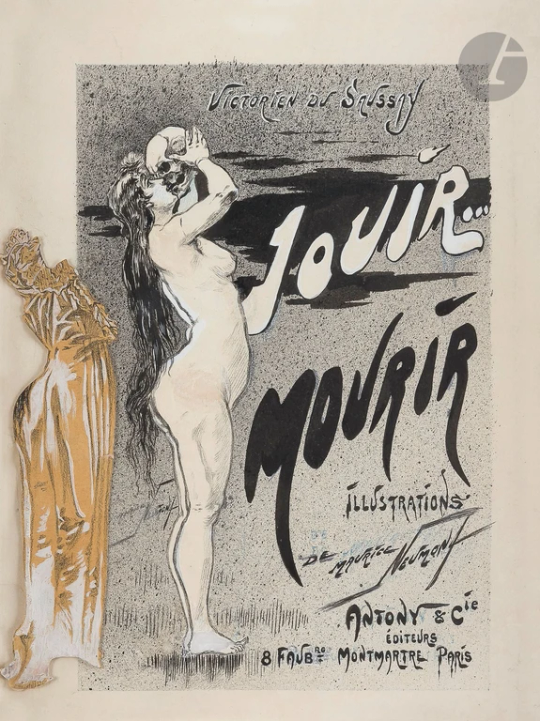
Couverture pour 'Jouir... mourir' de Victorien du Saussay (1868-1928, France), 1894 | Maurice Louis Henri Neumont (1868-1930, France)
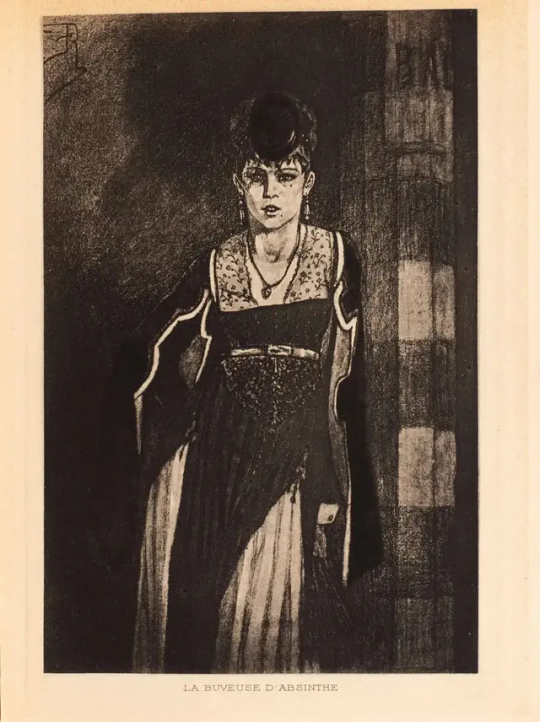
La buveuse d’absinthe, 1876 - edizione 1905 (Collezione privata, Roma) | Félicien Rops (1833-1898, Belgium)
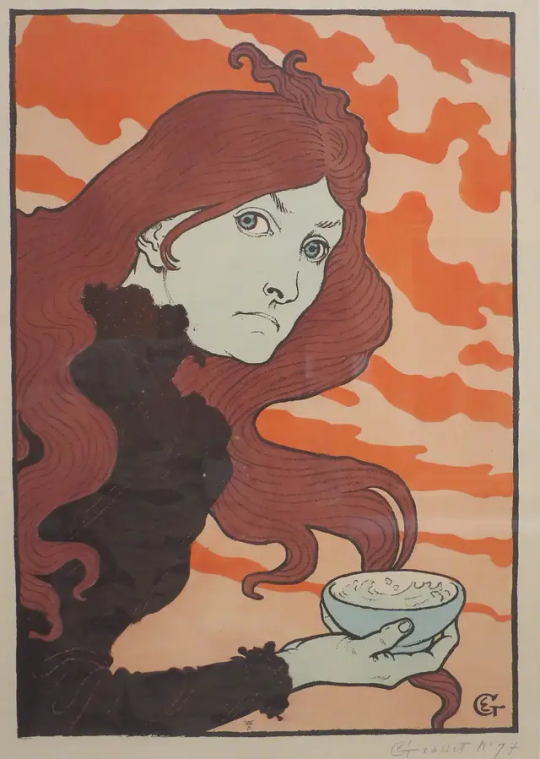
La vitrioleuse, 1894 (Van Gogh Museum, Amsterdam) | Eugène Grasset (1845-1917, France) - gli effetti dell'assenzio
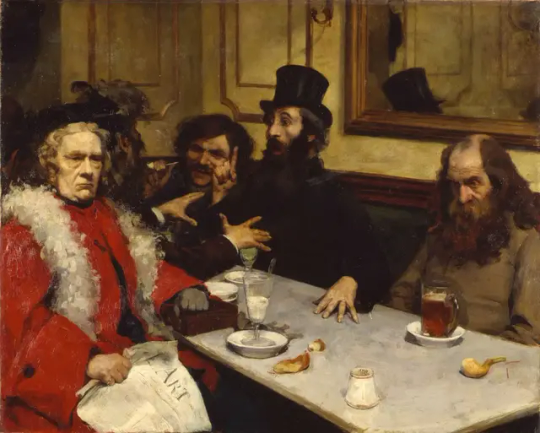
Les Incompris, 1904 ca. (Musée des Beaux-Arts, Quimper) | André Devambez (1867-1944, France) - Paul Verlaine (?) primo a dx, Victorine Meurent (in rosso) è l'Olympia di Manet 40 anni dopo
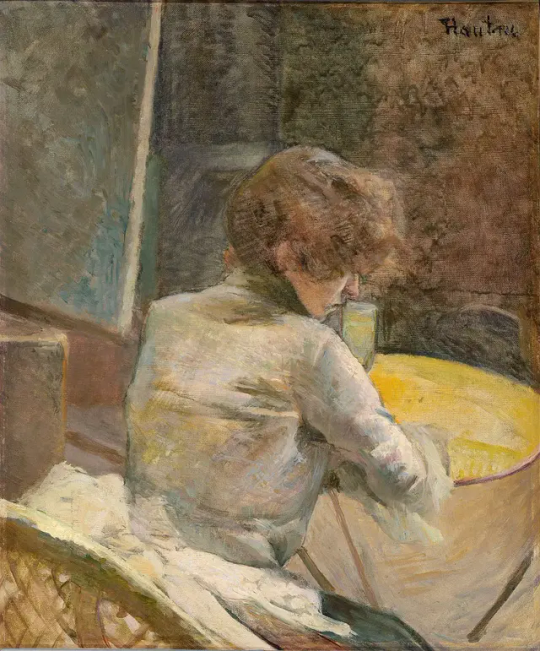
À Grenelle: L’attente, 1887 ca. (Clark Art Institute, Williamstown) | Henri de Toulouse-Lautrec (1864-1901, France) - bevitrice d'assenzio

Plum Brandy, 1877 ca. (National Gallery of Art, Washington) | Édouard Manet (1832-1883, France)

La morphinomane, 1897 | Eugène Grasset (1845-1917, France)
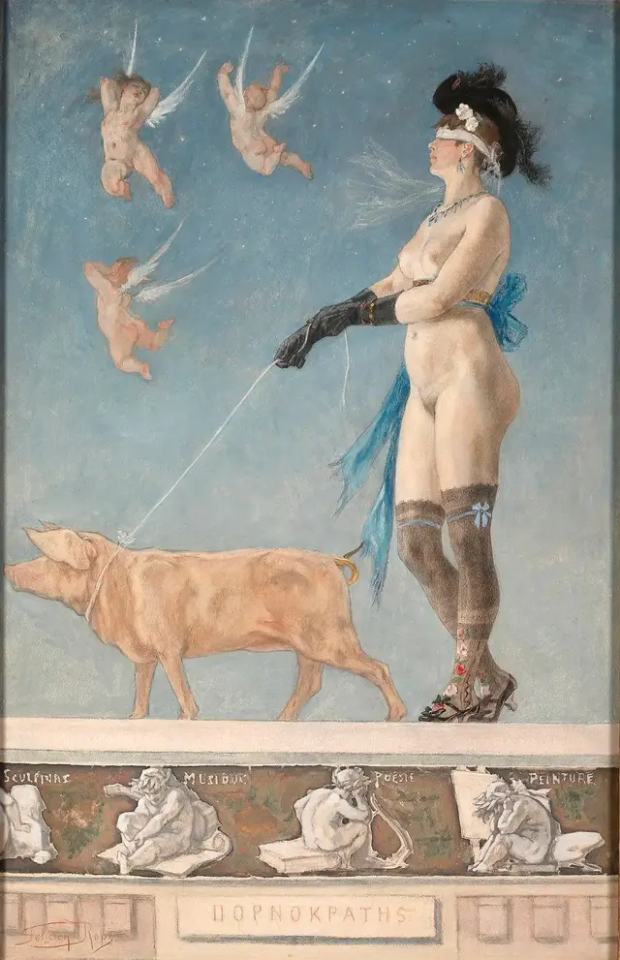
Pornocratès - La dame au cochon, 1896 (Musée Félicien Rops, Namur) | Félicien Rops (1833-1898, Belgium) & Albert Bertrand (1852-1912, France)

from 'Jugend', 1896 | Otto Seitz (1846-1912, Germany)

Opium dreamer | Catherine Abel (Australia, 1966)

L'Indemoniata (The Demoniac), 1893 | Joseph Middeleer (1865-1939, Belgium)
17 notes
·
View notes
Text
films to watch
Faust (1926) dir. F. W. Murnau Rebecca (1940) dir. Alfred Hitchcock Rope (1948) dir. Alfred Hitchcock Secret beyond the Door (1948) dir. Fritz Lang Noita palaa elämään / The Witch (1952) dir. by Roland af Hällström North by Northwest (1959) dir. Alfred Hitchcock 1960s Et mourir de plaisir (1960) dir. Roger Vadim Persona (1960) dir. Ingmar Bergman The Pit and the Pendulum (1961) dir. Roger Corman Cleo from 5 to 7 (1962) dir. Agnès Varda I tre volti della paura / Black Sabbath (1963) dir. Mario Bava Lilith (1964) dir. Robert Rossen The Satanist (1968) dir. Zoltan G. Spencer
1970s La rose écorchée / The Blood Rose (1970) dir. Claude Mulot Ovoce stromu rajských jíme / Full of Paradise (1970) dir. Vera Chytilová Trzecia część nocy / The Third Part of the Night (1971) dir. Andrzej Żuławski Les Lèvres Rouges / The Red Lips (1971) dir. Harry Kümel Viskningar och Rop / Cries and Whispers (1972) dir. Ingmar Bergman Diabeł (1972) dir. Andrzej Żuławski La notte dei diavoli / Night of the Devils (1972) dir. Giorgio Ferroni Ángeles y querubines / Angels and Cherubs (1972) dir. Rafael Corkidi The Blood Spattered Bride (1972) dir. Vicente Aranda La morte negli occhi del gatto / Seven Deaths in a Cat’s Eye (1973) dir. Antonio Margheriti Ganja & Hess (1973) dir. Bill Gun La Rose de Fer / The Iron Rose (1973) dir. Jean Rollin Lady Snowblood (1973) dir. Toshiya Fujita Female Vampire (1973) dir. Jesús Franco Bloody Murder / ...la main à couper (1974) dir. Etienne Périer Salomé (1976) dir. Téo Harnadez Die Marquise von O… / The Maquis of O... (1976) dir. Éric Rohmer The Witch Who Came from the Sea (1976) dir. Matt Cimber The Uncanny (1977) dir. Denis Héroux Escalofrío / Satan’s Blood (1978) dir. Carlos Puerto Nosferatu: Phantom der Nacht (1979) dir. Werner Herzog Les Sœurs Brontë / The Brontë Sisters (1979) dir. André Téchiné A Mulher Que Inventou o Amor / The Woman Who Invented Love (1979) dir. Jean Garrett
1980s Dressed to Kill (1980) dir. Brian de Palma Possession (1981) dir. Andrzej Żuławski Blow Out (1981) dir. Brian de Palma La Dame aux camélias / The Lady of the Camellias (1980) dir. Mauro Bolognini La morte vivante / The Living Dead Girl (1982) dir. Jean Rollin Angst (1983) dir. Gerald Kargl The Gold of Love (1983) dir. Eckhart Schmidt The Legend of Suram Fortress (1984) Sergei Parajanov Caravaggio (1986) dir. Derek Jarman Sous le soleil de Satan / Under the Sun of Satan (1987) dir. Maurice Pialat Vlčí bouda / Wolf’s Hole (1987) dir. Věra Chytilová Nekromantik (1987) dir. Jörg Buttgereit
1990s Mirror Mirror (1990) dir. Marina Sargenti Malina (1991) dir. Werner Schroeter Raising Cain (1992) dir. Brian de Palma Little Death (1995) dir. Francois Ozon A Casa (1997) dir. Šarūnas Bartas
2000s The Cell (2000) dir. Tarsem Singh Trouble Every Day (2001) dir. Claire Denis Perfume: The Story Of A Murderer (2006) dir. Tom Tykwer Barbe Bleue / Bluebeard (2009) dir. Catherine Breillat Viola di Mare (2009) dir. Donatella Maiorca
2010s Phyllis (2010) dir. Zina Saro-Wiwa Faust (2011) dir. Alexander Sokurov Cosmos (2015) dir. Andrzej Żuławski The Lure (2015) dir. Agnieszka Smoczynska
Goodnight Mommy (2014) dir. Veronika Franz & Severin Fiala Brian De Palma’s Filmography Jean Rollin’s filmography Walerian Borowczyk’s filmography Alfred Hitchcock’s filmography Stages of Mourning, 2004, Sarah Pucill Female Prisoner #701: Scorpion (Shunya Ito, 1972) Inferno (1980) dir. Dario Argento Raw (2016) finished
The Countess (2009) dir. Julie Delpy
19 notes
·
View notes